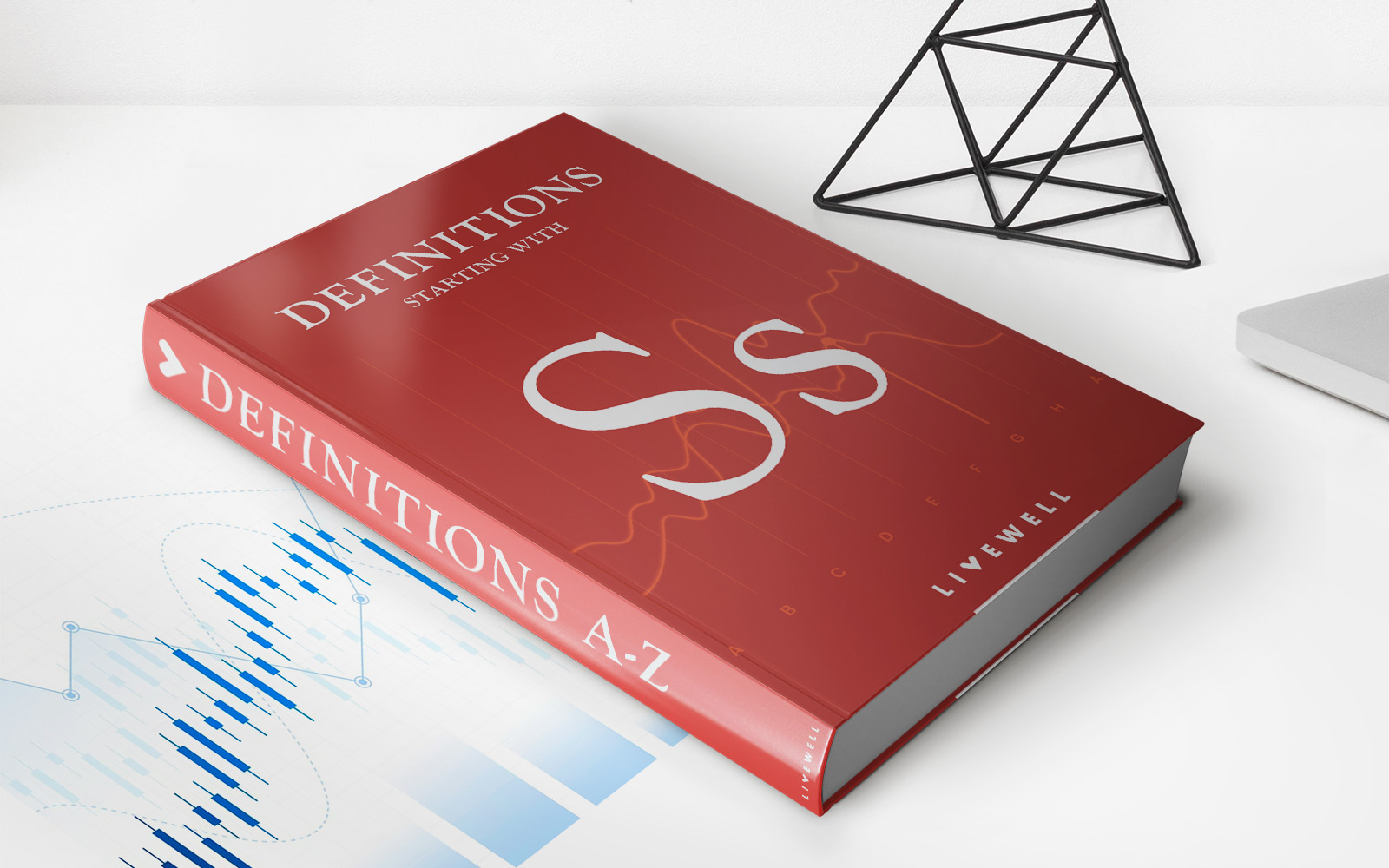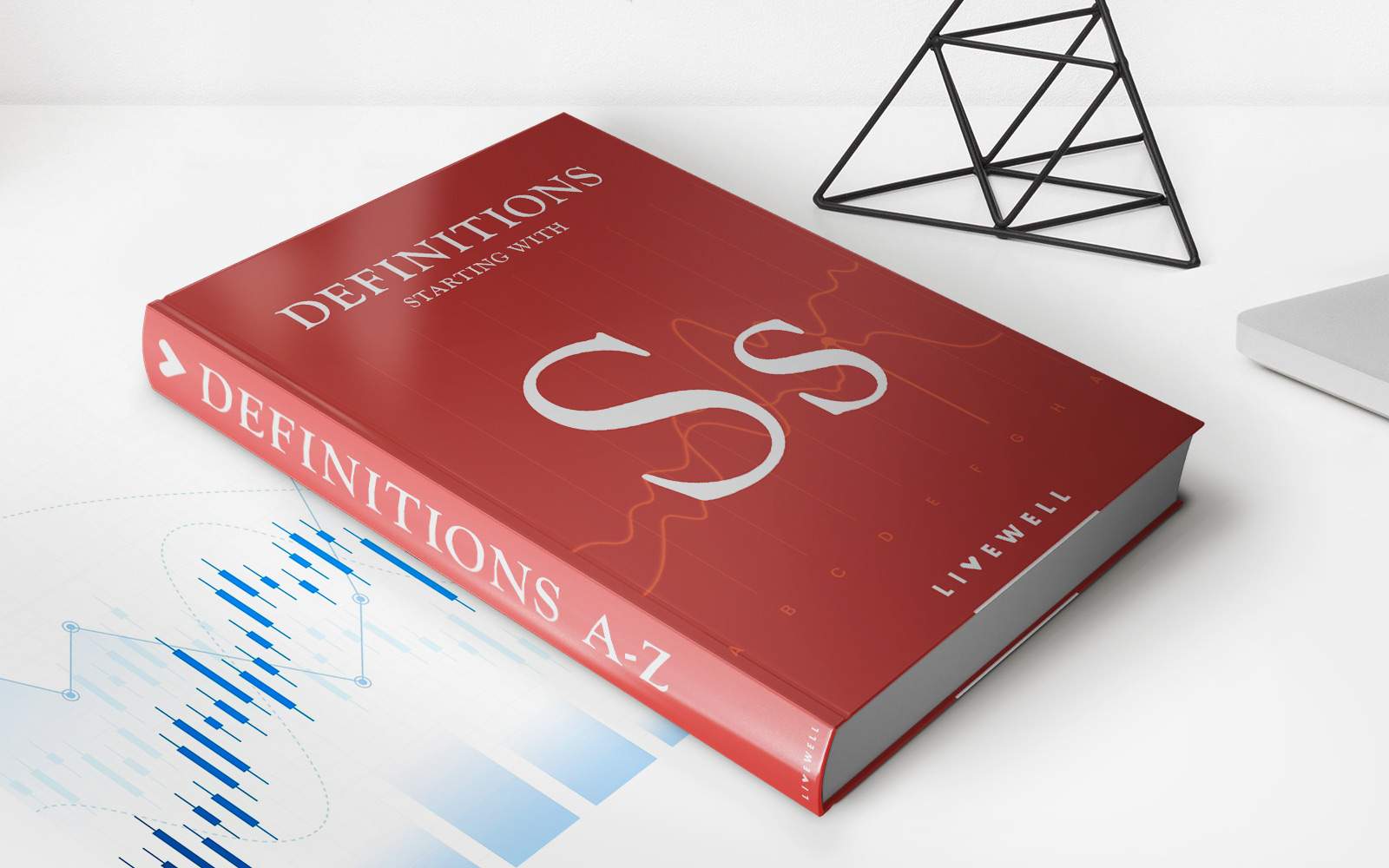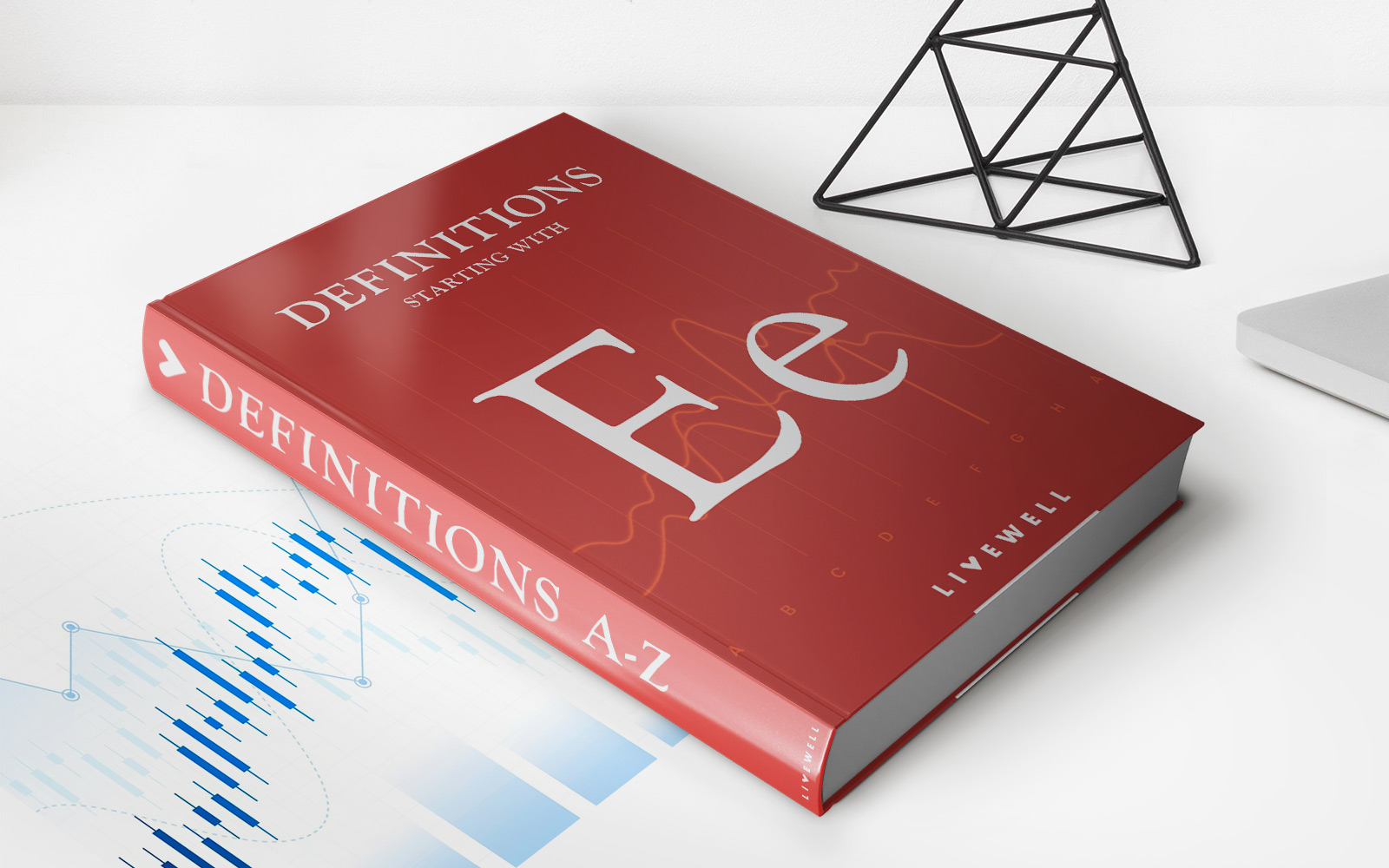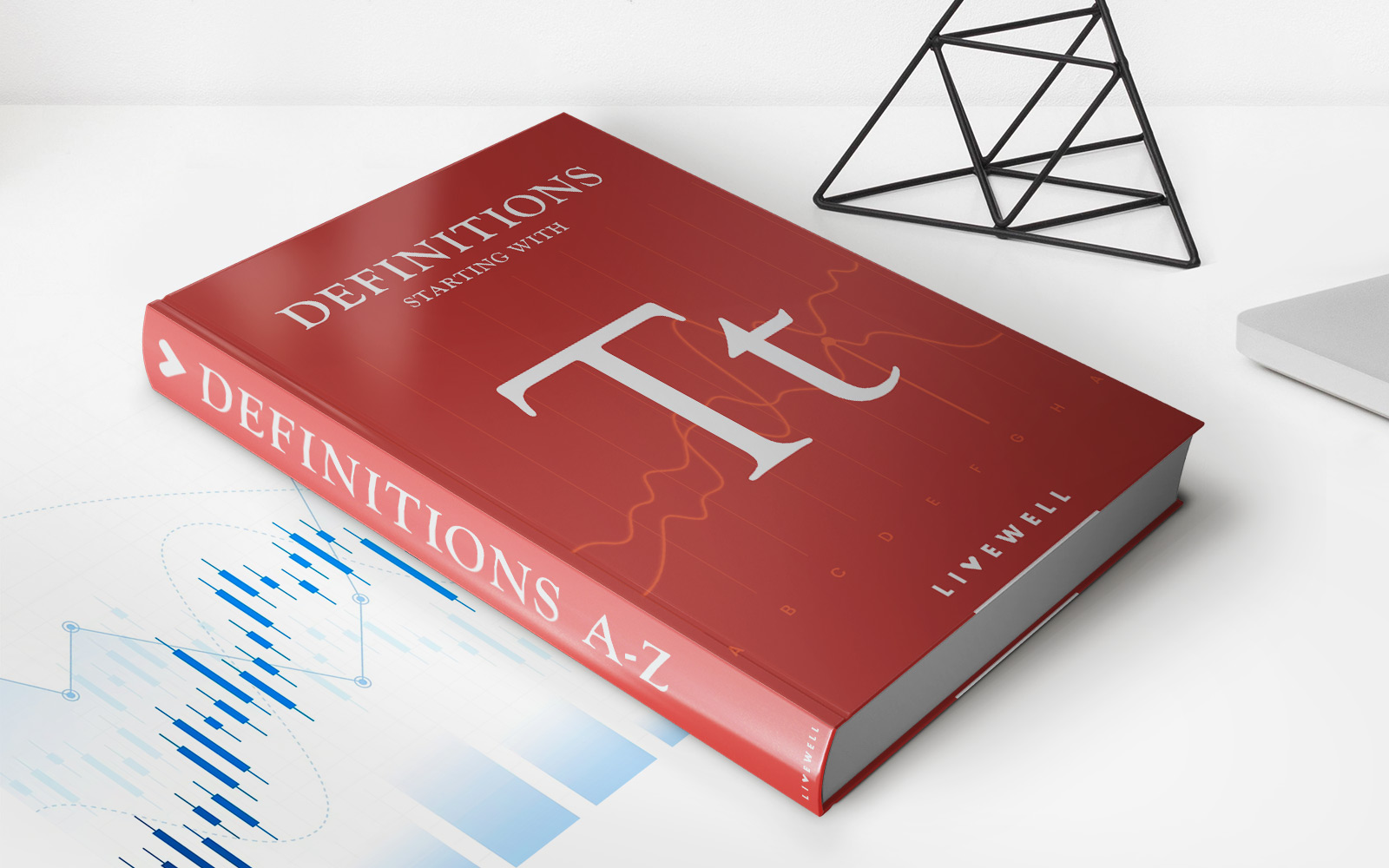

Finance
What Is An SMA In Stocks
Published: January 18, 2024
Learn what an SMA is and how it applies to stocks in the finance industry. Gain insights on this important concept in just a few sentences.
(Many of the links in this article redirect to a specific reviewed product. Your purchase of these products through affiliate links helps to generate commission for LiveWell, at no extra cost. Learn more)
Table of Contents
Introduction
In the world of stock trading and investment, there are numerous technical indicators and tools that traders use to analyze and predict market trends. One such tool is the Simple Moving Average (SMA), which is widely used by investors to make informed decisions about buying and selling stocks. The SMA is a popular indicator in the field of technical analysis and plays a crucial role in identifying trends and potential entry or exit points in the stock market.
The SMA is a mathematical calculation that helps traders smooth out price data over a specific time period, providing a clearer picture of the overall trend. It is called a “moving” average because it continuously updates with each new data point, thereby adapting to the latest market conditions. By calculating the average of a selected number of previous closing prices, the SMA provides a line that represents the average price of a security over a defined period of time.
The SMA acts as a signal or reference point to help traders determine the general direction of a stock’s price movement. By identifying trends and potential price reversals, the SMA assists traders in making strategic decisions about when to enter or exit a trade. In this way, it serves as a valuable tool for both short-term traders seeking quick profits and long-term investors looking for stability and growth.
Understanding and utilizing the SMA effectively can provide traders with valuable insights into a stock’s price movement. Traders can combine the SMA with other technical indicators or analysis techniques to gain a more comprehensive understanding of the market and enhance their trading strategies.
It is important to note that the SMA should not be solely relied upon for making trading decisions. It is best used as part of a larger toolkit that includes other technical indicators, fundamental analysis, and market research. Additionally, the SMA is just one of many technical indicators available, and its effectiveness may vary depending on the specific stock or market conditions.
In the following sections, we will delve deeper into the definition, calculation, types, advantages, and limitations of the SMA in stock analysis. We will also explore how the SMA compares to other technical indicators and provide examples of how traders can effectively use this tool to navigate the stock market.
Definition of SMA
The Simple Moving Average (SMA) is a technical analysis tool used to smooth out price data and identify trends over a specific period of time. It is a widely used and popular indicator among traders and investors in the stock market.
The SMA is calculated by taking the average of a selected number of previous closing prices. For example, a 20-day SMA would take the average of the closing prices of the past 20 trading days. This average is then plotted on a chart as a line, which helps traders visually identify the direction of the stock’s price movement.
The SMA is considered a “simple” moving average because it assigns equal weight to each data point in the selected time period. Each closing price is given the same importance, and there is no specific consideration for recent or older data. This makes the SMA easy to understand and calculate. However, it can also result in delayed responses to changes in the stock’s price.
The SMA acts as a reference point to help traders identify the overall trend of a stock. When the stock’s price is above the SMA, it indicates an uptrend or bullish sentiment. Conversely, when the price falls below the SMA, it suggests a downtrend or bearish sentiment. Traders often use the crossover between the stock’s price and the SMA as a signal to enter or exit trades.
The SMA can be applied to different timeframes, from short-term (such as 10-day or 20-day SMA) to longer-term (such as 50-day or 200-day SMA). Short-term SMAs are more responsive to price movements and provide more frequent signals, while longer-term SMAs are smoother and reflect more significant trends.
It is important to note that the SMA is a lagging indicator, meaning it relies on past data to calculate the average. As a result, it may not provide immediate signals for rapid price changes or sudden market shifts. Therefore, traders often use the SMA in conjunction with other technical indicators or analysis tools to get a more comprehensive view of the stock’s price action.
Overall, the SMA is a valuable tool in stock analysis as it helps traders identify trends, potential entry or exit points, and gauge the overall market sentiment. By understanding the calculation and interpretation of the SMA, traders can make more informed decisions in the dynamic world of stock trading.
Calculation of SMA
The Simple Moving Average (SMA) is calculated by summing up a selected number of previous closing prices and dividing the sum by the number of periods. The formula for calculating the SMA is as follows:
SMA = (Closing Price of Period 1 + Closing Price of Period 2 + … + Closing Price of Period n) / n
Let’s say we want to calculate a 20-day SMA. We would sum up the closing prices of the past 20 trading days and divide the sum by 20. The resulting average is then plotted on the chart as a line.
For example, let’s calculate the 20-day SMA for a stock with the following closing prices over the past 20 trading days:
- Day 1: $50
- Day 2: $52
- Day 3: $48
- Day 4: $55
- Day 5: $57
- Day 6: $51
- Day 7: $53
- Day 8: $54
- Day 9: $56
- Day 10: $58
- Day 11: $59
- Day 12: $60
- Day 13: $58
- Day 14: $56
- Day 15: $54
- Day 16: $52
- Day 17: $51
- Day 18: $50
- Day 19: $49
- Day 20: $47
Using the formula, we add up the closing prices of the past 20 trading days:
(50 + 52 + 48 + 55 + 57 + 51 + 53 + 54 + 56 + 58 + 59 + 60 + 58 + 56 + 54 + 52 + 51 + 50 + 49 + 47) / 20 = 53.3
The 20-day SMA is 53.3. This average is then plotted on the chart, and traders can identify the stock’s trend by observing whether the stock’s price is above or below the SMA.
It is important to note that as new data becomes available, the SMA is recalculated to reflect the most recent closing prices. This ensures that the SMA adapts to the changing market conditions and provides up-to-date trend information.
Calculating the SMA manually can be time-consuming, especially when working with a large dataset. Fortunately, most trading platforms and charting software automatically calculate and plot the SMA, making it easily accessible for traders.
By understanding the calculation of the SMA, traders can interpret the line on the chart and make informed decisions about the stock’s price movement.
Importance of SMA in Stock Analysis
The Simple Moving Average (SMA) plays a crucial role in stock analysis, providing traders and investors with valuable insights into the market and aiding in the decision-making process. Here are the key reasons why the SMA is important in stock analysis:
- Trend identification: The SMA helps in identifying the direction of a stock’s price movement. By plotting the SMA line on a chart and observing the relationship between the stock’s price and the SMA, traders can determine whether the stock is in an uptrend, downtrend, or moving sideways. This information is vital as it allows traders to align their strategies with the prevailing market trend.
- Entry and exit points: The SMA is often used to identify potential entry and exit points for trades. Traders look for crossovers between the stock’s price and the SMA. For example, when the price crosses above the SMA, it may signal a buying opportunity, while a cross below the SMA may indicate a selling opportunity. These price-SMA crossovers can be used as triggers for initiating or closing positions.
- Support and resistance levels: The SMA can act as support or resistance levels for a stock’s price. When the price approaches the SMA from below and bounces off, it may act as a support level. Conversely, when the price approaches the SMA from above and fails to break through, it may serve as a resistance level. Traders often monitor the interaction between the price and the SMA to evaluate the strength or weakness of these support and resistance levels.
- Confirmation of market trends: The SMA can confirm or validate market trends identified through other technical indicators or analysis tools. For example, if a stock is showing bullish signs based on other technical indicators, the confirmation of the SMA being above the price can provide additional confidence in the bullish outlook. Similarly, if multiple indicators suggest a bearish trend, a SMA crossover below the price can provide further validation.
- Long-term trend analysis: Longer-term SMAs, such as the 50-day or 200-day SMA, are widely used by investors to analyze the overall long-term trend of a stock. These SMAs smooth out short-term price fluctuations and provide a clearer picture of the stock’s performance over an extended period. Traders and investors use these longer-term SMAs to assess the stock’s stability, identify potential support or resistance levels, and make informed decisions about long-term investments.
The SMA is a versatile tool that can be used in various trading strategies and approaches. It provides traders with objective data about the stock’s price movement, helps in identifying trends, and assists in timing entry and exit points. However, it is important to note that the SMA should be used in conjunction with other analysis techniques and indicators to gain a comprehensive understanding of the market.
By incorporating the SMA into their analysis, traders and investors can enhance their decision-making process, improve the timing of their trades, and gain a competitive edge in the stock market.
Types of SMAs
In stock analysis, different types of Simple Moving Averages (SMAs) are used based on the time period or duration over which the average is calculated. Traders and investors can choose the type of SMA that best suits their trading strategy and timeframe. Here are some common types of SMAs:
- Short-term SMAs: Short-term SMAs are calculated over a relatively small number of periods, typically ranging from 5 to 50 days. These SMAs are more responsive to recent price changes and provide traders with more frequent signals. Short-term SMAs are commonly used by day traders or swing traders who aim to capture short-term price movements.
- Long-term SMAs: Long-term SMAs are calculated over a larger number of periods, commonly ranging from 50 to 200 days. These SMAs smooth out short-term price fluctuations and focus on capturing the overall trend of a stock. Long-term SMAs are favored by long-term investors who seek to identify major trend changes and make more strategic investment decisions.
- Multiple SMAs: Traders often use multiple SMAs simultaneously to get a clearer perspective on the stock’s price movement. For example, a popular combination is the 50-day and 200-day SMAs. When the short-term SMA (50-day) crosses above the long-term SMA (200-day), it is known as a “golden cross” and is seen as a bullish signal. Conversely, when the short-term SMA crosses below the long-term SMA, it is known as a “death cross” and is considered a bearish signal.
- Exponential Moving Averages (EMAs): Exponential Moving Averages are similar to SMAs but give more weight to recent prices. EMAs are calculated using a specific formula that decreases the weight of older data points. This makes EMAs more responsive to current market conditions and price changes. Traders often use EMAs in conjunction with SMAs to further refine their analysis and get more timely signals.
- Custom SMAs: Traders can create their own custom SMAs based on their specific trading strategies and preferences. They can experiment with different time periods, such as a 13-day or a 37-day SMA, to identify patterns and trends that align with their trading style.
It is important to note that the choice of SMA type depends on the trader’s time horizon, trading style, and the specific stock being analyzed. Different SMAs may yield different signals and perspectives on the stock’s price movement. Traders often combine multiple types of SMAs with other technical indicators and analysis techniques to enhance their trading strategies.
By understanding the different types of SMAs and their applications, traders can select the most suitable SMA for their analysis and make more informed trading decisions.
Advantages and Limitations of Using SMAs
The use of Simple Moving Averages (SMAs) in stock analysis offers several advantages, but it also comes with some limitations. Here are the key advantages and limitations of using SMAs:
Advantages:
- Trend identification: SMAs help traders identify the overall trend of a stock’s price movement. By plotting the SMA line on a chart, traders can easily determine whether the stock is in an uptrend, downtrend, or moving sideways. This information is crucial for aligning trading strategies with prevailing market trends.
- Entry and exit signals: SMAs act as potential entry and exit points for trades. Traders often look for crossovers between the stock’s price and the SMA as signals to buy or sell. For example, when the price crosses above the SMA, it may indicate a buying opportunity, while a cross below the SMA may signal a selling opportunity.
- Visual simplicity: SMAs provide a clear and easy-to-understand visual representation of a stock’s price trend. The SMA line on a chart helps traders visualize the overall movement and direction of the stock, making it accessible to both professionals and novice traders.
- Support and resistance levels: SMAs can act as support or resistance levels for a stock’s price. Traders often observe how the price interacts with the SMA to identify potential levels where the stock may bounce off or face resistance. These levels can assist in setting profit targets or managing risk.
- Long-term trend analysis: Longer-term SMAs, such as the 50-day or 200-day SMA, enable investors to analyze the stock’s long-term trend and make strategic investment decisions. These SMAs smooth out short-term price fluctuations, providing a clearer picture of the stock’s overall performance and trend direction.
Limitations:
- Lagging indicator: SMAs are lagging indicators that rely on past price data. As a result, they might not provide immediate signals for rapid price changes or sudden market shifts. Traders need to be aware that SMAs may have a delayed response to stock price movements.
- Whipsaws and false signals: SMAs can generate whipsaws or false signals during periods of sideways or choppy market conditions. When the stock’s price moves in a range, the price-SMA crossover signals may occur frequently but lack consistency and accuracy. Traders should be cautious when relying solely on SMAs during volatile or unpredictable market conditions.
- Not suitable for all market conditions: SMAs are most effective during trending markets, where there is a clear and sustained price movement. In ranging or sideways markets, SMAs may not provide reliable signals or accurate trend analysis. Traders must adapt their strategies and utilize other indicators or techniques in different market environments.
- Subjectivity in SMA selection: Choosing the right SMA period or timeframe is subjective and can vary based on the trader’s preferences, trading style, and the specific stock being analyzed. Different SMAs may yield different signals and interpretations, adding a level of subjectivity to its usage.
- Not a standalone indicator: SMAs should not be used as standalone indicators for making trading decisions. Traders should consider incorporating other technical indicators, fundamental analysis, and market research to form a well-rounded analysis before making any trading decisions.
Understanding the advantages and limitations of using SMAs empowers traders to utilize this tool effectively while being mindful of its potential drawbacks. Incorporating SMAs into a comprehensive trading strategy can enhance decision-making and provide valuable insights into the stock market.
SMA vs. Other Technical Indicators
When it comes to stock analysis, there is a wide range of technical indicators available for traders to choose from. Each indicator has its own unique characteristics and strengths. Let’s explore how the Simple Moving Average (SMA) compares to other popular technical indicators:
SMA vs. Exponential Moving Average (EMA): The EMA is similar to the SMA but gives more weight to recent prices. The EMA reacts faster to changes in price compared to the SMA. While the SMA may provide smoother and more stable trends, the EMA is more responsive to recent price movements. Traders often use the EMA for short-term analysis and the SMA for long-term trend identification.
SMA vs. Relative Strength Index (RSI): The RSI is a popular momentum oscillator that measures the speed and change of price movements. It helps identify overbought or oversold conditions in a stock. While the SMA focuses on identifying trends, the RSI provides insight into the strength or weakness of a stock’s price movement. Traders often use the RSI in combination with SMAs to confirm or validate signals.
SMA vs. Moving Average Convergence Divergence (MACD): The MACD combines two trend-following indicators – the MACD line and the signal line – to identify potential buy and sell signals. The MACD is more complex and provides a more nuanced analysis compared to the SMA. It is often used for both trend identification and generating trade signals.
SMA vs. Bollinger Bands: Bollinger Bands consist of three lines – the SMA, an upper band, and a lower band – that help identify volatility and potential overbought or oversold conditions. The SMA within the Bollinger Bands framework serves as a reference point, while the upper and lower bands help identify potential price breakouts or reversals. Traders often use Bollinger Bands in conjunction with SMAs for a comprehensive analysis.
SMA vs. Stochastic Oscillator: The Stochastic Oscillator compares a stock’s closing price to its price range over a specific period, indicating whether the stock is overbought or oversold. While the SMA focuses on trend identification, the Stochastic Oscillator helps identify potential turning points in a stock’s price. Traders often use both indicators together to get a comprehensive view of the market.
Ultimately, the choice between different technical indicators, including the SMA, depends on the trader’s trading style, timeframe, and the specific stock being analyzed. Traders often combine multiple indicators to form a well-rounded analysis, leveraging the strengths of each indicator and minimizing their limitations.
It’s important to note that no single indicator can guarantee profitable trading decisions. Traders should conduct thorough analysis by considering various technical indicators, fundamental factors, and market conditions before making any investment or trading choices.
Examples of SMA Usage in Stock Trading
The Simple Moving Average (SMA) is a versatile tool used by traders in various ways to analyze stock trading opportunities. Here are a few examples of how SMAs can be effectively used in stock trading:
- Trend following: Traders can use SMAs to identify the overall trend of a stock’s price movement. By plotting a longer-term SMA, such as the 50-day or 200-day SMA, on a chart, traders can determine if the stock is in an uptrend or downtrend. They may then look for buying opportunities when the stock’s price is above the SMA or selling opportunities when the price is below the SMA.
- Moving Average Crossovers: Traders often use the crossover of two SMAs as a signal to enter or exit trades. For example, when the shorter-term SMA (e.g., 20-day SMA) crosses above the longer-term SMA (e.g., 50-day SMA), it is called a “bullish crossover” and may signal a buying opportunity. Conversely, when the shorter-term SMA crosses below the longer-term SMA, it is called a “bearish crossover” and may indicate a selling opportunity.
- Support and Resistance levels: SMAs can act as support or resistance levels for a stock’s price. Traders observe how the stock’s price interacts with the SMA to identify potential levels for buying or selling. If the stock’s price finds support near the SMA and bounces back, it may provide a buying opportunity. Conversely, if the stock’s price faces resistance near the SMA and fails to break through, it may indicate a selling opportunity.
- Confirming Breakouts: Traders use SMAs to confirm breakouts from chart patterns or key levels of support and resistance. For instance, if a stock breaks out above a significant resistance level and the price is also above the SMA, it provides confirmation that the breakout could be valid. This confirmation can instill more confidence in the breakout and attract more traders to participate.
- Determining Stop-loss Levels: Traders use SMAs to establish stop-loss levels, which are predetermined price levels at which a trade will be automatically closed to limit losses. By setting stop-loss orders just below the SMA, traders aim to protect themselves in case the stock’s price undergoes a significant reversal. The SMA can serve as a simple and objective reference point for setting stop-loss levels.
It’s essential to note that the effectiveness of using SMAs in stock trading depends on various factors, including market conditions, stock volatility, and the timeframe being analyzed. Traders often combine SMAs with other technical indicators, such as oscillators or volume-based indicators, to enhance their analysis and gain a more comprehensive understanding of the stock’s price action.
These examples demonstrate how SMAs can guide traders in identifying trends, establishing entry and exit points, and managing risk. However, traders must validate signals generated by SMAs through thorough analysis, such as considering market fundamentals, conducting sector analysis, and monitoring key news and events.
Overall, SMAs can be powerful tools when incorporated into a well-defined trading strategy, providing traders with valuable insights and helping them make informed decisions in the dynamic world of stock trading.
Conclusion
The Simple Moving Average (SMA) is a fundamental tool in the field of stock analysis and trading. It provides traders and investors with valuable insights into market trends, potential entry and exit points, and overall price movement. Throughout this article, we have explored the definition, calculation, types, advantages, and limitations of using SMAs in stock analysis.
SMAs are versatile tools that can be used in various trading strategies and timeframes. They help identify trends, confirm breakouts, establish support and resistance levels, and assist in determining entry and exit points. By analyzing the relationship between a stock’s price and the SMA, traders can make more informed decisions and improve their trading performance.
However, it is important to acknowledge that SMAs are not foolproof and should be used in conjunction with other technical indicators, fundamental analysis, and market research. They have limitations, such as lagging behind rapid price changes and generating false signals during sideways markets.
Traders should be cautious and adapt their strategies accordingly when using SMAs. Choosing the most suitable SMA type and timeframe requires careful consideration of one’s trading style, objectives, and the specific stock being analyzed. Combining SMAs with other indicators can provide a more comprehensive analysis and increase the probability of successful trading decisions.
Ultimately, the effective use of SMAs requires practice, experience, and ongoing analysis. Traders should continuously refine their strategies, test different SMA combinations, and stay updated with market trends and conditions.
In conclusion, SMAs are valuable tools that, when used correctly, can enhance a trader’s understanding of the stock market and improve decision-making. By incorporating SMAs into a comprehensive trading strategy, traders can gain a competitive edge and increase their chances of success in the dynamic and ever-changing world of stock trading.














